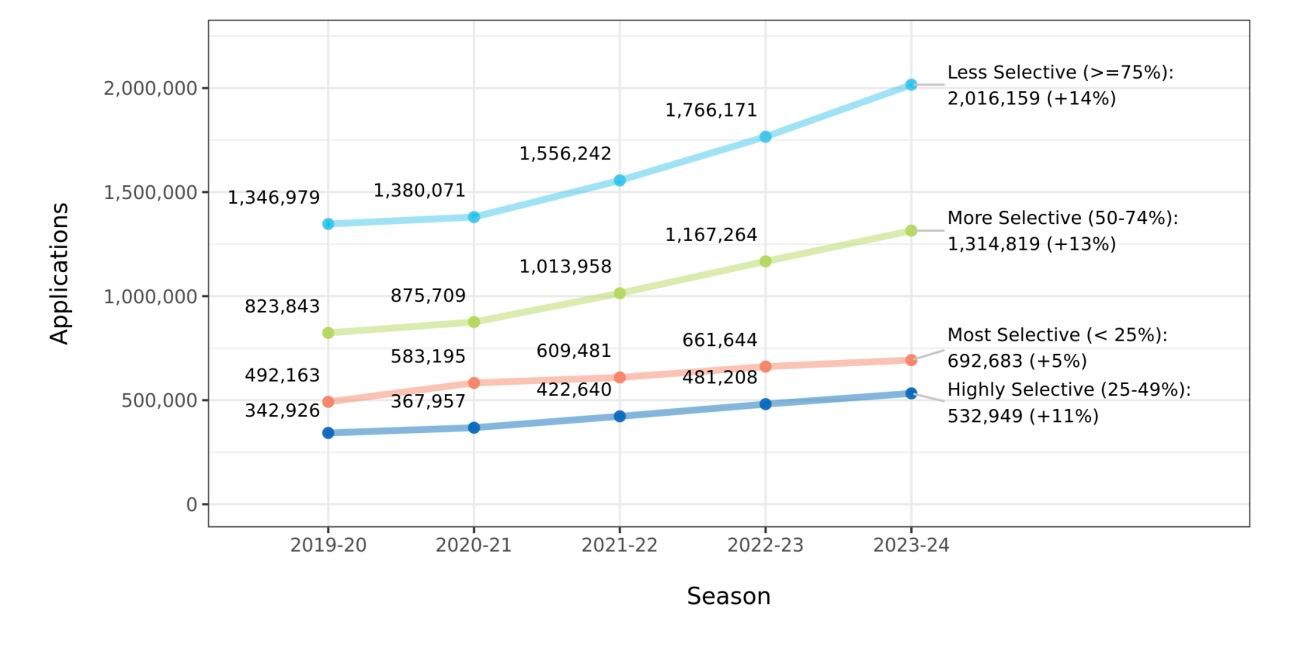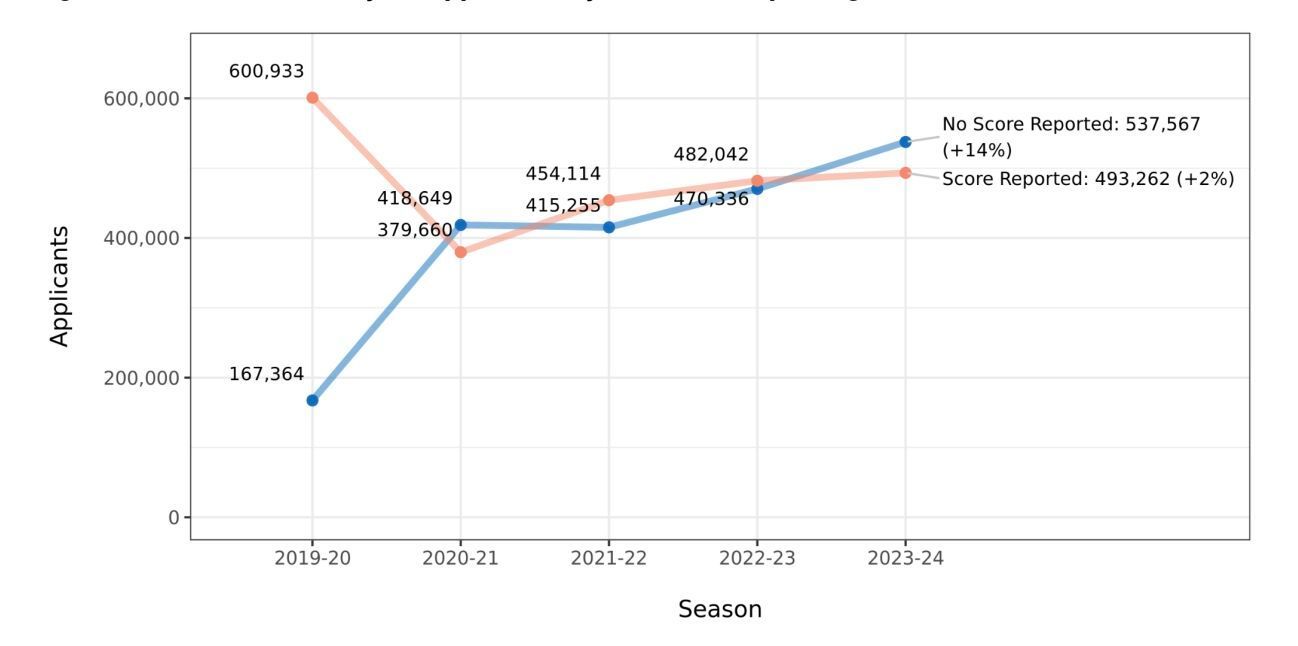This page is licensed under Creative Commons under Attribution 4.0 International. Anyone can share content from this page, with attribution and link to College MatchPoint requested.
Class of 2024 College Applications Jump 12%
College applications up 12% for Class of 2024 📈 New Common App data shows applications to 834 member colleges have jumped 12% so far this cycle, reaching 4.5 million application submissions. Duke is just one example, receiving 6,240 Early Decision applicants, which is over 1,000 more than any previous Early Decision round and represents a 28% increase from 2022, bringing the acceptance rate to a record low 12.9%. The size of student's college list continued to grow, with the average number of applications per student rising 3%. Applicants identifying as underrepresented minorities grew 15% - driven by 15% jumps in both Black and Latino applicants. So far this year, more students have chosen not to report test scores than to report them, for the first time since 2020-21 amid disrupted testing.

College application rates continue going up, with total applications made through the Common App up 12% so far this admissions cycle over last year. Behind this growth is more students applying to more colleges, likely hoping for better chances of admission somewhere amid dropping acceptance rates. But it also shows changing student demographics and ongoing impacts of test optional policies started during the pandemic.
The average number of applications per Common App student has risen 3% over last year. Students are putting in more applications, even as application fees and essays required per school add up. The push to apply widely comes from increasing competition—the overall acceptance rate across over 500 small liberal arts colleges is predicted to hit a record new low of just 54% this year.
At the same time, minority student applications have jumped 15%, signaling that fewer obstacles to apply are also impacting numbers. College access programs and less focus on standardized tests may be allowing more students to see themselves as prospective college students.

Test optional policies continue to enable application increases, with more students not including scores this year. Submitting scores risks rejection, but not sharing them leaves the door open, pushing students to apply more widely.
Applications for early decision and early action admission have grown sharply at many colleges, which can further influence applicant behavior. Duke is just one example, receiving 6,240 Early Decision applicants, which is over 1,000 more than any previous Early Decision round and represents a 28% increase from 2022, bringing the acceptance rate to a record low 12.9%. Early applications grew 18% at Dartmouth, 13% at Williams, and 6% at Rice and MIT, indicating students are vying for an early admissions boost. However, early applications at Harvard declined 17% to a four-year low.
It was not just highly selective schools that are experiencing application inflation. The
University of Tennessee, Knoxville is experiencing record growth in undergraduate first-year applications and the most competitive applicant pool in our 229-year history. For Fall 2024 entry, UT received 49,248 applications by the November 1 Early Action deadline, a 28% increase and 10,774 more applications compared to November 2022.
For high school juniors, this intensifying application competition means standing out from the crowd will only get harder when they apply to colleges next year. Strategically targeting reaches, matches, and safety schools and telling compelling application stories will be more critical than ever. With test optional removing that basis for differentiation but application volume swelling, juniors should focus on demonstrating genuine interest, aligning eclectic accomplishment, and conveying their unique perspectives when applying.


